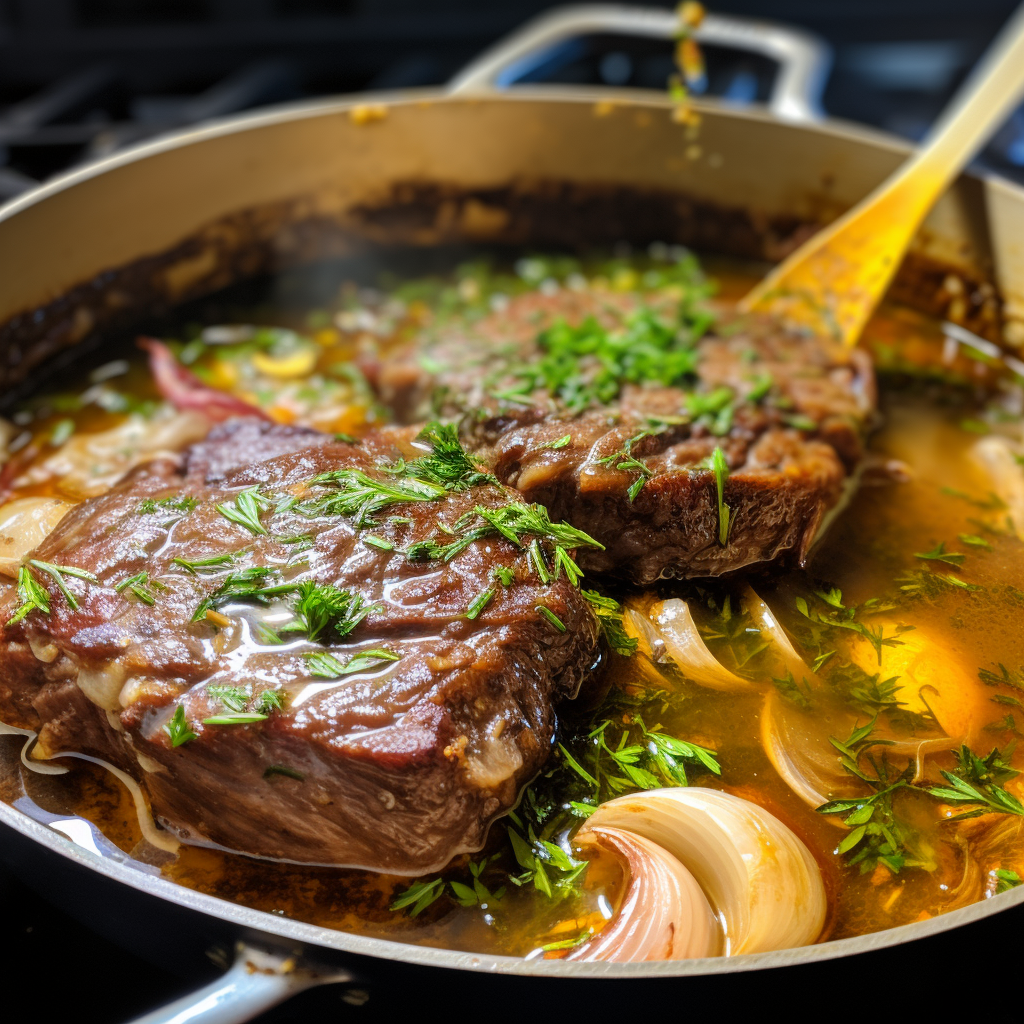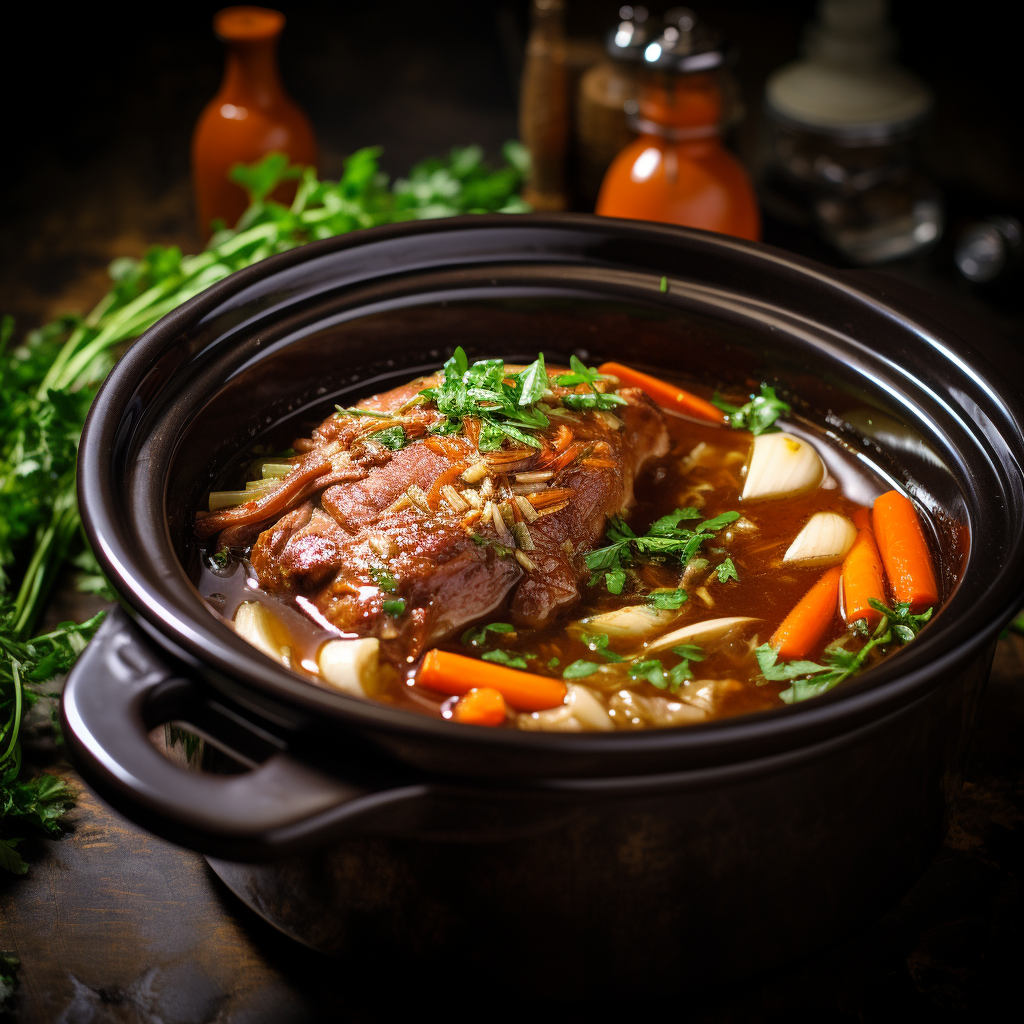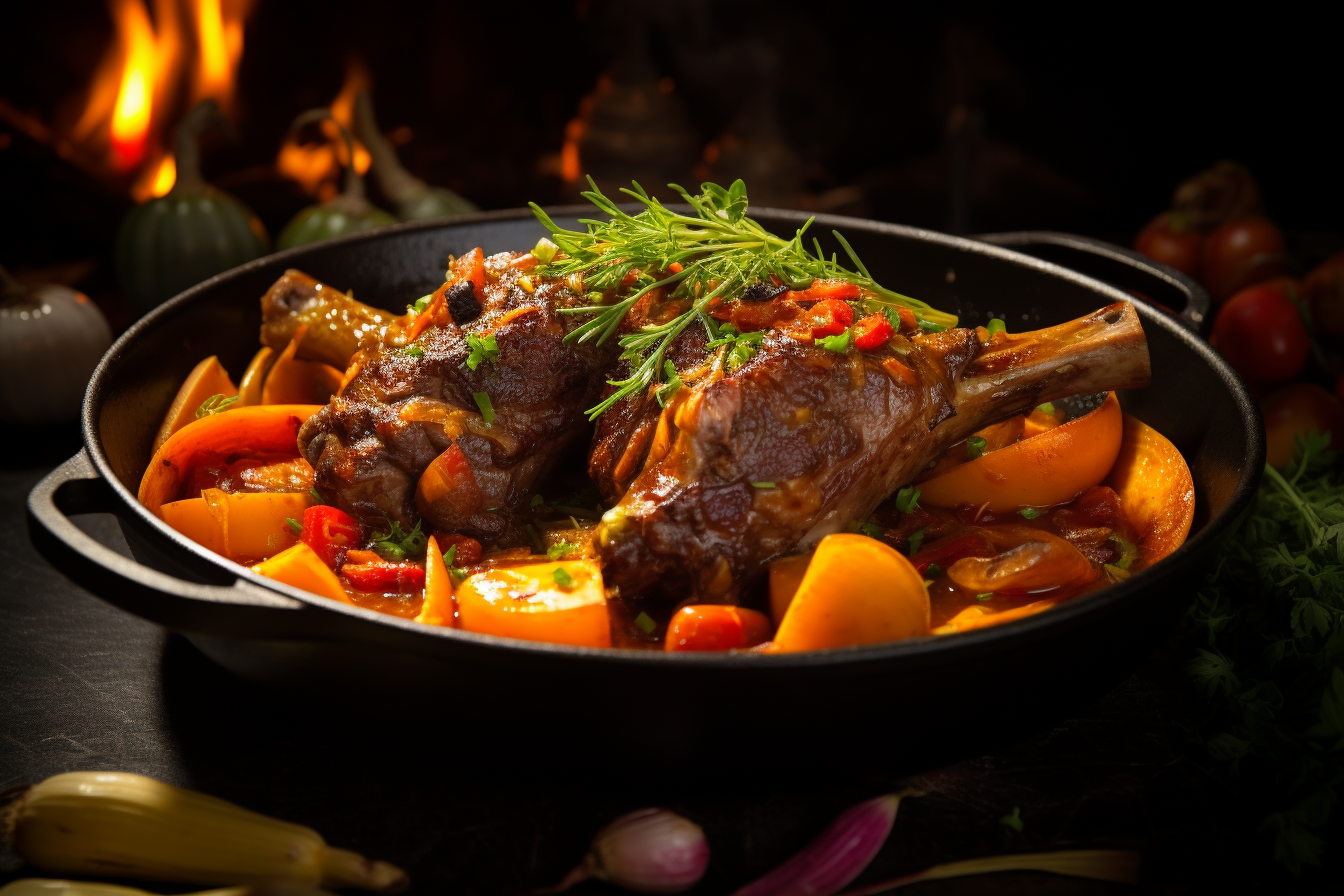What is the Best Cooking Method for Shanks?
Shanks are one of the most flavorful cuts of meat, often considered tough due to their high collagen content. However, when cooked correctly, they transform into some of the most tender, rich, and flavorful meals you can prepare. The best cooking method for shanks typically involves long, slow cooking to allow the connective tissues to break down, turning tough muscle into silky, juicy goodness. In this comprehensive guide, we’ll dive into the best ways to cook shanks, focusing on braising, slow cooking, roasting, and sous vide, ensuring your shanks are melt-in-your-mouth tender.
Whether you’re cooking beef, lamb, or pork shanks, the secret lies in selecting the right method for the specific cut and balancing flavors through low and slow cooking techniques. With the correct approach, shanks can elevate any meal to gourmet status.
Understanding Shanks: What Makes Them Unique?
Shanks come from the leg portion of the animal and are known for being lean and full of collagen. This is especially true for animals like cows, sheep, and pigs, whose legs get significant exercise. The abundance of muscle in these regions makes the meat tough and requires more time to become tender when cooked. However, the high collagen content of shanks is also what makes them special. When collagen is properly cooked, it breaks down into gelatin, which gives the meat an unctuous, melt-in-your-mouth texture.
Types of Shanks
Shanks come in several varieties, depending on the type of animal. Here are the most common ones you’ll encounter:
- Beef Shanks: These are perhaps the most commonly used shanks in recipes, known for their rich, meaty flavor. Beef shanks require extended cooking times to become tender and are often featured in dishes like osso buco or slow-cooked stews.
- Lamb Shanks: Lamb shanks have a robust flavor and are a staple in Mediterranean and Middle Eastern cuisine. Braising is considered the best cooking method for lamb shanks, where they are often paired with aromatic herbs and spices.
- Pork Shanks: Although less common, pork shanks are still flavorful when slow-cooked. They’re often smoked or braised and used in rustic dishes like pork knuckle stew or hearty soups.
What Sets Shanks Apart?
Shanks differ from other cuts of meat primarily because of their high collagen content. Unlike more tender cuts of meat that can be quickly grilled or pan-seared, shanks require time for the collagen to transform into gelatin, which is why they benefit from long, slow cooking methods. If you attempt to cook shanks too quickly, the collagen won’t have time to break down, resulting in tough and chewy meat.
The Science Behind Cooking Shanks
To cook shanks properly, it’s essential to understand how collagen breaks down and turns into gelatin. Collagen begins to break down at temperatures around 160°F (70°C), but it takes several hours for the transformation to occur. As the meat reaches higher temperatures (around 180-200°F or 82-93°C), the collagen gradually dissolves into gelatin, giving the meat its tender, moist texture.
In contrast, if you cook shanks quickly at high heat, the collagen won’t have time to break down, and you’ll be left with tough, chewy meat. This is why slow cooking methods like braising, roasting, slow cooking, and sous vide are the most effective for shanks.
Best Cooking Methods for Shanks
When it comes to cooking shanks, there are several techniques that work well, all involving low and slow cooking. Let’s explore four of the best cooking methods for shanks: braising, slow cooking, roasting, and sous vide. Each method has its unique advantages, and we’ll go into detail on how to perfect each one.
1. Braising: The Gold Standard for Cooking Shanks
Braising is widely considered the best cooking method for shanks. This technique involves browning the meat first to develop a deep flavor, then cooking it slowly in liquid, such as broth or wine. The combination of moist heat and time allows the tough collagen in the meat to break down, resulting in a tender, flavorful dish.
How to Braise Shanks

- Sear the Shanks: Season the shanks generously with salt and pepper. Heat oil in a large pot or Dutch oven, and sear the shanks on all sides until a deep, golden-brown crust forms. This step helps develop a rich flavor.
- Add Aromatics: After removing the shanks, add aromatics like onions, garlic, carrots, and celery to the pot. Sauté them until softened, which helps build a flavorful base for the braising liquid.
- Deglaze the Pan: Pour in wine, broth, or stock to deglaze the pot, scraping up the browned bits stuck to the bottom. These bits add complexity and depth to the dish.
- Slow Cook in Liquid: Add the seared shanks back into the pot along with the aromatics and enough liquid (broth, wine, or a combination) to cover the meat about halfway. Bring to a simmer, cover with a lid, and cook in a preheated oven at 300°F (150°C) for 3-4 hours. The slow cooking process will allow the collagen to dissolve into gelatin, ensuring the meat is tender and flavorful.
Braising shanks is incredibly versatile, and you can customize the flavor profile by adding different herbs, spices, and liquids. For example, lamb shanks pair beautifully with rosemary, thyme, and garlic, while beef shanks shine when braised with red wine, bay leaves, and onions.
For more recipe inspiration, check out our Beef Shank Recipe Guide.
2. Slow Cooking: The Effortless Option
If you prefer a hands-off approach, slow cooking is an excellent option for cooking shanks. Using a slow cooker allows you to set the temperature low and let the meat cook for several hours with minimal effort. Slow cooking yields tender, juicy results similar to braising, with the added benefit of convenience.
How to Slow Cook Shanks

- Sear the Shanks (Optional): While not strictly necessary, searing the shanks before placing them in the slow cooker adds depth of flavor. If you have time, it’s worth taking this extra step.
- Layer Ingredients in the Slow Cooker: Place the shanks in the slow cooker along with vegetables like garlic, onions, and carrots. Pour in broth or wine to cover the meat about halfway.
- Set It and Forget It: Set the slow cooker to low and cook for 8-10 hours, or until the meat is tender and falling off the bone. If you’re in a rush, you can cook on high for 4-5 hours, but low and slow is recommended for the best texture.
Check out our Slow Cooker Chuck Roast Recipe for more tips on cooking tough cuts of meat.
3. Roasting: Crispy Outside, Tender Inside
While braising and slow cooking are more common methods for shanks, roasting offers a different texture and flavor. Roasting shanks at a low temperature creates a tender, juicy interior while allowing the exterior to develop a crispy, caramelized crust.
How to Roast Shanks
- Season the Shanks: Generously season the shanks with salt, pepper, and herbs like rosemary, thyme, or bay leaves. You can also rub them with olive oil for extra flavor.
- Slow Roast: Place the shanks on a roasting rack in a preheated oven at 275°F (135°C). Roast for 3-4 hours, turning the shanks halfway through to ensure even browning.
- Finish at High Heat: For a crispy exterior, increase the oven temperature to 400°F (200°C) during the last 20-30 minutes of cooking. This will help develop a golden-brown crust while keeping the inside tender.
Roasting is an excellent method if you prefer a bit of crunch on the outside of your meat, and it pairs well with roasted vegetables.
For more inspiration on roasting techniques, check out our Chuck Roast Recipe.
4. Sous Vide: Precision Cooking for Perfect Results
If you want complete control over the cooking process, sous vide is the way to go. Sous vide allows you to cook the meat at a precise temperature for an extended period, ensuring the collagen fully breaks down while maintaining the meat’s natural juices.
How to Sous Vide Shanks
- Season and Seal the Shanks: Season the shanks with salt, pepper, and your preferred herbs or spices. Vacuum-seal the shanks in a plastic bag, ensuring no air is left inside.
- Cook for 24-48 Hours: Preheat the sous vide water bath to 165°F (74°C) for beef or lamb shanks, or 160°F (71°C) for pork shanks. Place the vacuum-sealed shanks in the water bath and cook for 24-48 hours, depending on the size of the shanks.
- Sear the Shanks: After cooking sous vide, quickly sear the shanks in a hot pan for a minute or two on each side to develop a crust.
Sous vide is perfect for achieving restaurant-quality results at home, and it’s especially useful for tough cuts like shanks, where precision cooking can make all the difference.
Pairing Shanks with Side Dishes
Shanks are incredibly rich and flavorful, so pairing them with complementary side dishes will elevate your meal to the next level. Here are a few classic side dishes that work well with slow-cooked shanks:

- Mashed Potatoes: Creamy mashed potatoes are a perfect match for braised or roasted shanks. The potatoes soak up the flavorful sauce, making every bite delicious. Try our Mashed Potatoes Recipe for a foolproof side dish.
- Roasted Vegetables: Roasted root vegetables, such as carrots, parsnips, and Brussels sprouts, bring a sweet contrast to the savory richness of the shanks.
- Polenta: Creamy polenta provides a smooth base for slow-cooked meat, especially lamb shanks. The mild flavor of the polenta allows the bold flavors of the meat to shine.
- Risotto: A flavorful risotto or simple rice dish can absorb the delicious juices from the meat, making it a great pairing.
Tips and Tricks for Cooking Perfect Shanks
Here are a few additional tips to ensure your shanks turn out perfectly every time:
- Use Bone-In Shanks: Bone-in shanks impart more flavor and help keep the meat moist during long cooking times.
- Don’t Rush the Cooking Process: Cooking shanks at low temperatures for a long time is key to achieving tender, flavorful meat. Be patient and let the collagen break down naturally.
- Rest the Meat Before Serving: After cooking, let the shanks rest for 10-15 minutes before serving. This allows the juices to redistribute, ensuring every bite is juicy and flavorful.
Conclusion: Mastering the Art of Cooking Shanks
The best cooking method for shanks involves slow, low-temperature cooking that allows the collagen to break down and turn into gelatin. Whether you choose braising, slow cooking, roasting, or sous vide, the key is patience. Shanks require time to reach their full potential, but the results are well worth it. With the techniques and tips outlined in this guide, you can confidently cook shanks to perfection, delivering a tender, flavorful dish that will impress every time.
For more recipe ideas and inspiration, check out our Beef Shank Recipe Guide.

